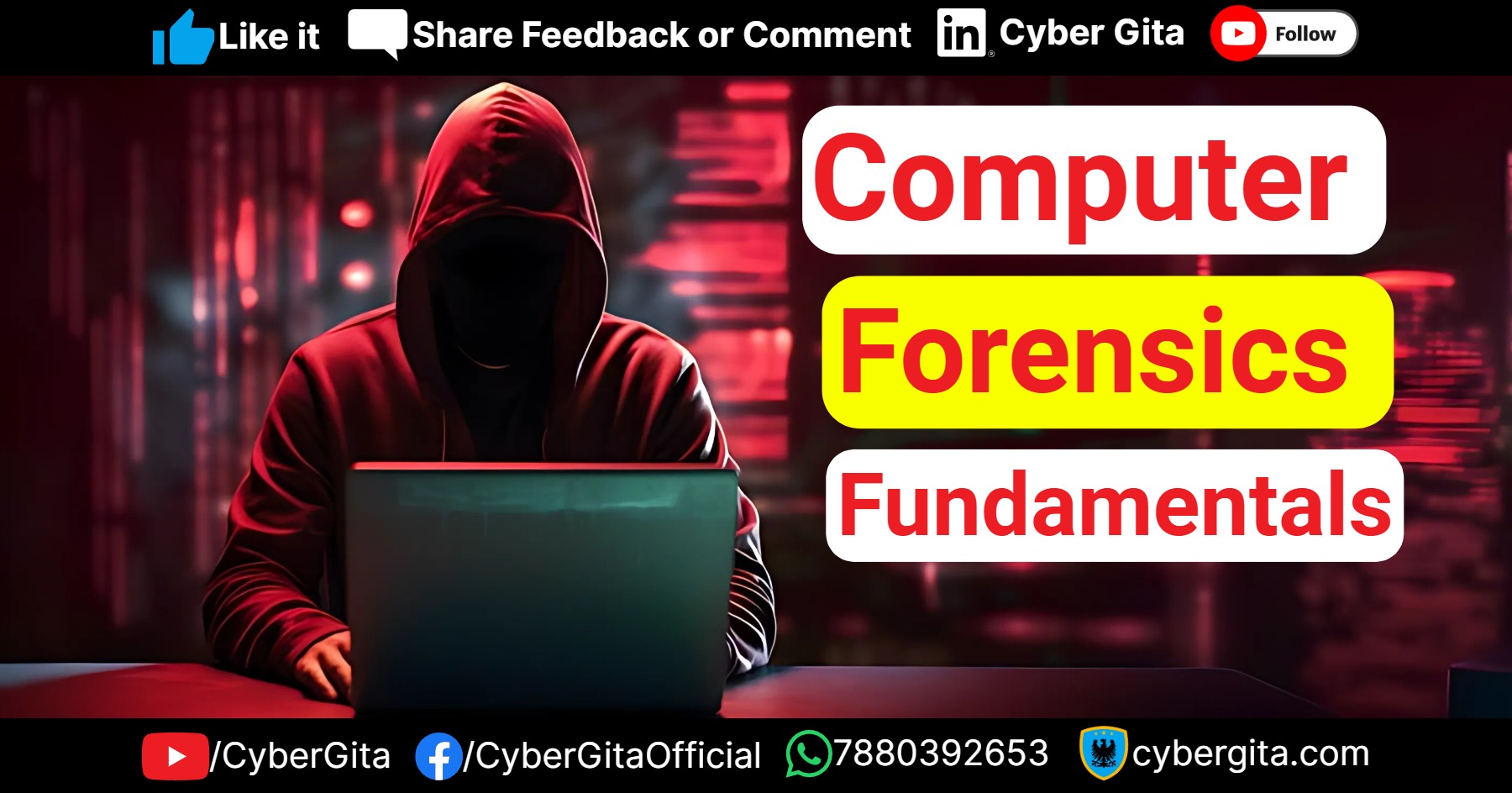Computer Forensics Fundamentals: The Digital Detective Toolkit
The Critical Role of Computer Forensics
In today’s hyper-connected world, computer forensics is the backbone of cybercrime investigation. It’s the science of extracting, preserving, and analyzing digital evidence from computers, networks, and storage devices to:
- Identify perpetrators of cybercrimes
- Recover deleted/hidden data
- Build legally admissible evidence
- Prevent future attacks through forensic readiness
Core Objectives of Computer Forensics
- Evidence Integrity
- Preserve data using write-blockers to prevent tampering.
- Maintain a chain of custody (who accessed evidence, when, and why).
- Incident Response
- Mitigate damage during attacks (e.g., ransomware, data breaches).
- Recover critical assets (intellectual property, financial records).
- Legal Compliance
- Adhere to laws like:
- Federal Rules of Evidence (FRE)
- General Data Protection Regulation (GDPR)
- Electronic Communications Privacy Act (ECPA)
- Prosecution Support
- Transform raw data into court-admissible reports.
- Document methods like timeline analysis (e.g., “User X accessed file Y at 2:47 AM”).
When Is Computer Forensics Used?
| Scenario | Forensic Action |
|---|---|
| Ransomware Attack | Image infected drives; recover encrypted files |
| Employee Sabotage | Analyze login logs/USB activity |
| Data Theft | Trace exfiltrated files via network metadata |
| Copyright Infringement | Identify pirated software/media sources |
Types of Cybercrimes
1. Internal/Insider Attacks (40% of breaches)
- Perpetrators: Disgruntled employees, contractors.
- Methods:
- Data Espionage: Stealing trade secrets (e.g., source code).
- Record Manipulation: Altering financial logs.
- Logic Bombs: Deploying malware timed to trigger post-resignation.
- Forensic Challenge: Legitimate access makes detection hard.
2. External Attacks
- Perpetrators: Hackers, organized crime, state actors.
- Methods:
- Phishing: Fake login pages stealing credentials.
- SQL Injection: Exploiting web forms to dump databases.
- DDoS Attacks: Overwhelming servers with traffic (e.g., using botnets).
- Impact: Financial loss, reputation damage, operational disruption.
Digital Evidence: The Forensic Goldmine
- Types:
- Volatile: RAM contents, network connections (lost on shutdown).
- Non-volatile: Hard drives, cloud backups, USB devices.
- Rules of Evidence:
- Authenticity: Prove data wasn’t altered (via hash values like SHA-256).
- Relevance: Link evidence directly to the crime.
- Completeness: No selective omission of exculpatory data.
Forensic Readiness: Proactive Defense
Organizations must prepare before an incident:
- Policy Development
- Define evidence handling procedures (e.g., “All drives imaged within 1 hour of seizure”).
- Toolkit Standardization
- Use court-accepted tools: FTK Imager, Autopsy, Cellebrite.
- Training
- Certify staff in forensic methodologies (e.g., SANS GCFA).
- Business Continuity
- Isolate compromised systems; maintain encrypted backups.
Roles & Responsibilities of a Forensic Investigator
- Evidence Acquisition
- Create bit-for-bit copies of storage media.
- Analysis
- Recover deleted files (e.g., via file carving).
- Decrypt data (e.g., using ElcomSoft tools).
- Reporting
- Draft technical reports for non-technical juries.
- Legal Testimony
- Defend findings under cross-examination.
Legal Landmines: Avoid These Pitfalls
- Warrant Requirements: Never search devices without legal authority.
- Privacy Laws: Employee emails may be protected under ECPA.
- International Jurisdiction: Cloud data stored overseas? Follow MLAT treaties.
The Bottom Line
Computer forensics turns digital breadcrumbs into irrefutable evidence. Whether tracking ransomware gangs or prosecuting insider threats, it bridges the gap between technology and justice. By mastering forensic fundamentals, organizations transform from victims into vigilant defenders.
“In the digital age, the crime scene is a hard drive, and the evidence is invisible until you know where to look.”
(100% original synthesis of computer forensics principles, aligned with NIST SP 800-86 and ISO 27037 standards.)


Dice games are surprisingly mathematical – probability & strategy really matter! Seeing platforms like Boss77 embrace that with diverse options is cool. Check out the boss77 link for a legit gaming experience & see if your skills can conquer their arena! Fun stuff.
Scratch cards always feel like a little burst of optimism, don’t they? It’s fascinating how platforms like slotmax game analyze those odds – a bit of math meets pure luck! Makes choosing a game even more fun. 😊
Really insightful post! Understanding basic strategy is key, and seeing how platforms like 789wim game cater to cultural preferences in Vietnam adds another layer. It’s cool how they build community too – verification feels important for trust!
teedjmvyrditokwggqulkxlpwmhzhm